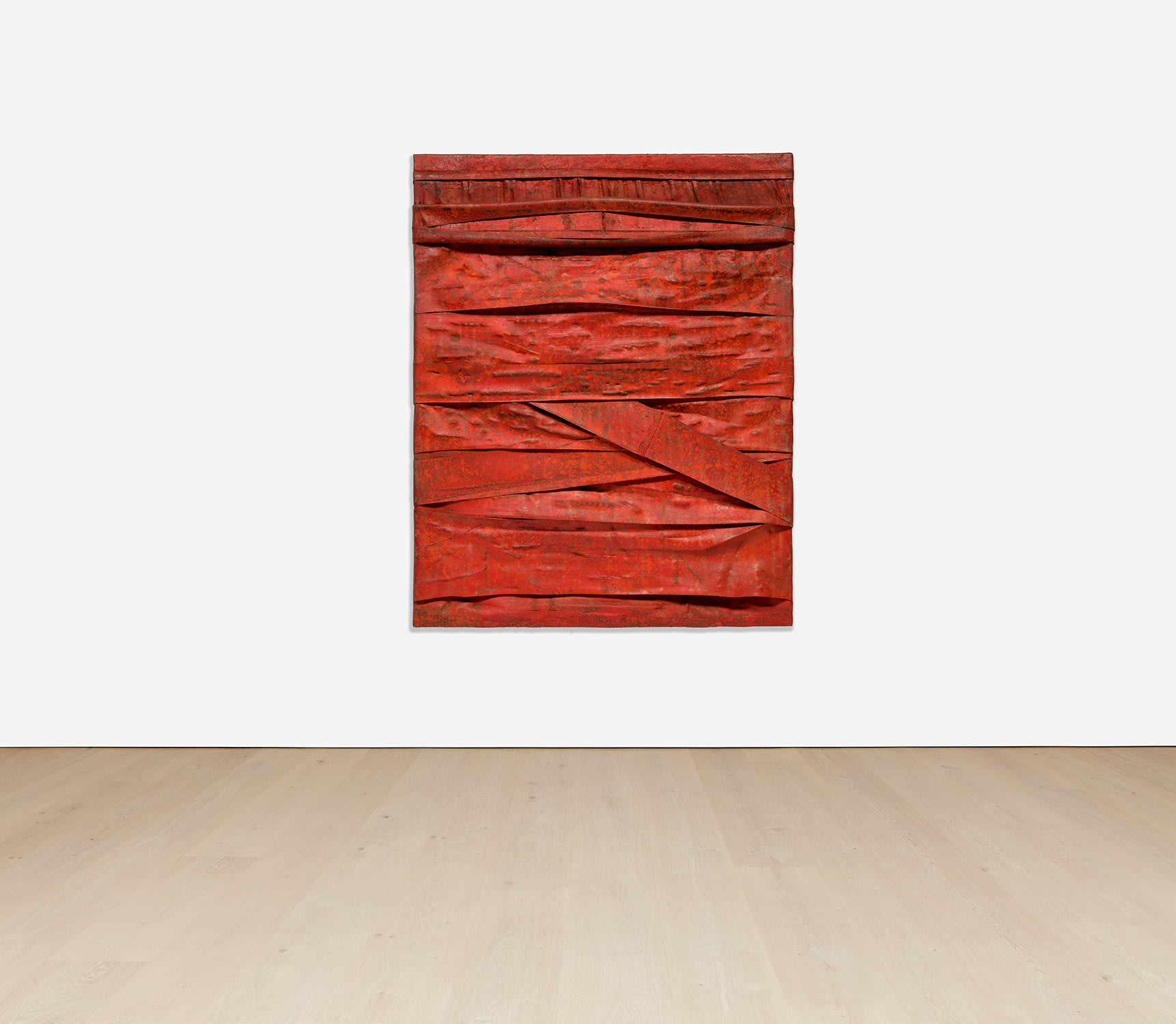



15
Salvatore Scarpitta
Red Freight
signed, titled, inscribed and dated ‘“RED FREIGHT” S. Scarpitta 1961 75” x 61” c/o Leo Castelli 4 E 77 ST NY NY’ on the reverse
bandages and mixed media on canvas
190.5 x 154.9 x 14.5 cm (75 x 61 x 5 3/4 in.)
Executed in 1961.